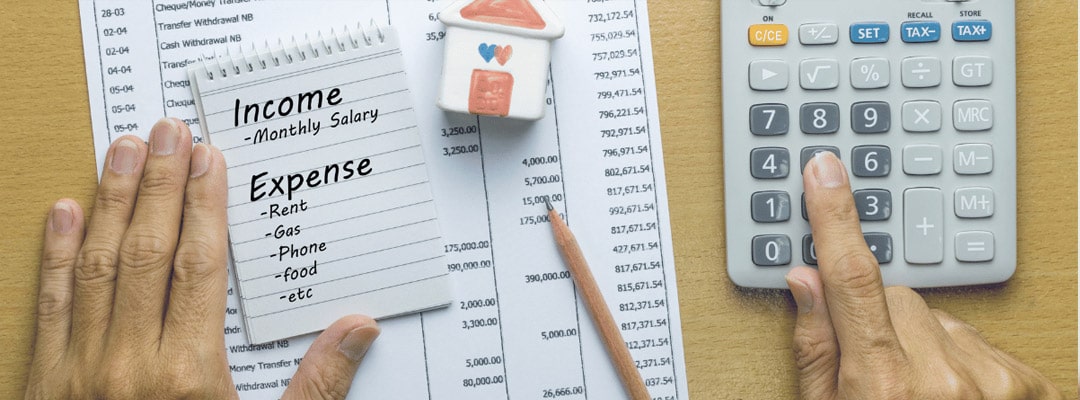Do you want to know how to improve financial health? This guide empowers you with simple, yet powerful steps to transform your relationship with money—like tracking your spending, building an emergency fund, and reducing debt.
Let’s embark on this journey together, creating a clear picture of your financial future and retirement!
For more financial resources, be sure to visit the IFW site where you can find a free Retirement Score Live Webinar and a Live Retirement Education Session.
Key Takeaways
- First assessing your financial situation, including net worth and expenses, is essential for setting realistic goals and achieving financial health.
- Building an emergency fund and managing high-interest debt are critical steps toward financial security and freedom.
- Enhancing financial literacy and utilizing tools like budgeting apps can greatly improve spending habits and overall financial management.
Be sure to calculate your retirement score to begin planning your retirement roadmap with IFW today!
1. Understanding Your Financial Picture

Achieving good financial health starts with knowing where you stand.
Begin by evaluating the following:
- Net worth
- Monthly income
- Expenses
Your net worth can be calculated with a simple equation: Assets – Debts = Net Worth.
Monthly income can be calculated by adding up all sources of income you receive within a month. This includes: salary or wages, freelance or side gig earnings, rental income, dividends from investments, and other regular sources of income.
Once you’ve identified all your income streams, total them up to get a clear picture of your monthly cash flow.
Expenses can be calculated by tracking all the money you spend over a month. This includes: fixed costs like rent or mortgage payments, utilities, insurance, loan payments, variable costs like groceries, entertainment, dining out, and transportation, subscriptions, annual fees, and unexpected costs.
By adding up these expenses, you can see where your money goes, helping you identify areas where you can cut back.
This gives you a clear snapshot of your current financial picture. But it’s more than just numbers; it’s about understanding your story. Do you have enough saved to handle life’s surprises? If not, you’re not alone.
2. Tracking Your Spending

Personal finance is like a puzzle, with key pieces like savings, spending, and debt management all fitting together. Improve one, and the others often follow, which leads us to Step 2: tracking your spending.
Tracking your spending is fundamental to personal finance.
Monitoring where your money goes helps identify habits and areas for improvement, and thanks to modern technology, it has never been easier to keep tab of your spending than it is today!
Here are some easy ways to track your spending:
- Budgeting Apps (e.g., Mint, YNAB)
- Bank Statements (review regularly)
- Expense Tracker Spreadsheet (simple and manual)
- Receipt Logging (keep and record receipts)
- Daily Spending Journal (write down each expense)
Budgeting applications can be incredibly useful in this process. Certain apps allow you to link various financial accounts, monitor your expenditure, and categorize your spending effectively. These tools help visualize spending patterns, making it easier to adjust behaviors and avoid overspending.
Whether manually or through an app, consistency in monitoring expenses is key. This practice helps you stay within budget and ensures progress towards your financial goals.
Pro Tip: In addition to your monthly monitoring, review your expenditures every three months to better identify patterns. This quarterly check can reveal areas where spending has crept up and help you adjust your financial plan to stay on track with your savings and investment goals.
3. Building an Emergency Fund

Now, let’s tackle one of the most unsettling “what if” scenarios: What if unexpected expenses suddenly arise? What if you face a job loss, a major home repair, or another surprise that could throw your finances into chaos?
The thought of scrambling for funds and falling into high-interest debt is extremely daunting!
That’s why having an emergency fund is essential.
By saving 3 to 6 months worth of living expenses, you create a financial safety net that shields you from the stress and uncertainty of life’s unexpected turns, giving you the stability and peace of mind you deserve [1].
While the thought of building an emergency fund can feel overwhelming, it doesn’t have to be. Starting small can make a big difference when building your emergency fund!
For example, saving just as little as $25 a week can accumulate significantly over time – that’s less than $4 a day! At the end of each month, you’ll have easily contributed $100 to your emergency fund. That’s an easy $1,200 a year.
Pro Tip: Use a high-yield savings account to benefit from competitive interest rates and multiply your money through the power of compounding interest.
4. Paying Down High-Interest Debt

On to Step 4, making sure you pay down all of your high-interest debt.
High-interest debt can significantly burden your financial health. Unsecured debts, like credit cards, often have high rates ranging from 15% to 30%, accumulating quickly if not managed properly.
If you need to manage your debts, you may consider options to borrow money.
Paying off these debts is crucial for achieving financial freedom and improving your situation.
There are two strategies for tackling high-interest debt:
- The avalanche method focuses on paying off the highest interest debts first, saving more on interest over time.
- The snowball method targets the smallest debts first, providing a psychological boost as you see debts cleared.
Choose the method that best suits your goals and needs; however, regardless of which method you choose, consistency is key. Regular monitoring of your credit reports and scores acts as a positive debt management strategy that helps you stay on track and avoid further debt.
Pro Tip: Making payments that exceed the minimum monthly payments required can significantly reduce overall debt and interest costs.
5. Increasing Retirement Savings

Boosting your retirement savings is essential for long-term financial security. Here are just a few strategies for doing so:
- Take advantage of Catch-Up Contributions: Once you reach age 50, you can make higher contributions to IRAs and 401(k) plans, allowing you to significantly boost your retirement funds.
- Allocate Raises and Bonuses: Funnel any extra income from raises or bonuses directly into your retirement savings. This helps you grow your nest egg without affecting your regular budget.
- Contribute 15% of Your Income: Contributing 15% of your income to your retirement account ensures adequate savings.
- Maximize Employer Match: If your employer offers a 401(k) plan with matching funds, contribute enough to get the full advantage, as it’s essentially free money for your retirement.
Be sure to regularly review your retirement investment strategy to ensure your retirement funds align with your financial goals. If your employer does not offer a 401(k) plan, consider individual retirement accounts (IRAs) to maximize savings.
Pro Tip: Automate your retirement contributions to increase your savings effortlessly. Set up automatic transfers to your retirement account from your paycheck or bank account. This “pay yourself first” approach ensures you consistently save, reduces the temptation to spend, and helps you benefit from compound interest over time.
6. Investing Wisely

Another crucial step in improving your financial health is investing.
You’ve heard the buzz about stocks, bonds, and real estate, but diving into investing can seem overwhelming. Where are you supposed to start?
Well, the key is to just start and start early! Unfortunately, there is no one-size-fits-all approach to investing as everyone’s financial situation and goals are unique.
Begin by assessing your risk tolerance, time horizon, and investment goals. Whether you’re interested in stocks, bonds, real estate, or mutual funds, the important thing is to take that first step and consistently invest over time.
Investing wisely is key to building a strong financial future. Starting early allows you to benefit from compound growth, where investments earn returns on both the initial capital and accumulated returns, significantly increasing wealth over time.
Pro Tip: Be sure to diversify investments across different asset classes to reduce risk and enhance the potential for long-term gains.
7. Enhancing Financial Literacy

The age-old saying is as follows, knowledge is power. When it comes to financial health, this couldn’t be more true.
Understanding key financial concepts—like budget, investments, and debt management—empowers you to make informed decisions that can significantly impact your financial future.
By continuously educating yourself through books, courses, and financial news, you gain the insights needed to navigate complex financial situations with confidence. This proactive approach not only helps you build wealth and achieve your financial goals but also equips you with the tools to adapt to changing economic conditions and secure your financial well-being.
Numerous resources are available to improve financial literacy. Books, magazines, websites, and podcasts tailored to your knowledge level provide valuable insights. Be sure to visit the IFW site for financial resources and free guides!
Pro Tip: Take advantage of IFW’s free Retirement Score Live Webinar and gain valuable insights from industry experts about how you can improve your financial health!
Summary
Improving your financial health requires a comprehensive approach, from understanding your financial picture to enhancing your financial literacy. By tracking your spending, building an emergency fund, paying down high-interest debt, increasing retirement savings, and investing wisely, you can take control of your financial future!
Remember, financial freedom is within reach if you take the necessary steps today. Implement these tips, stay motivated, and watch your financial health improve over time.
Your future self will thank you for the efforts you make now.
Frequently Asked Questions
What is the first step to assessing my financial health?
To assess your financial health, start by evaluating your net worth, monthly income, and expenses, as this will provide a clear overview of your financial situation.
How can I start building an emergency fund?
Start building your emergency fund by saving small amounts consistently and utilizing a high-yield savings account to enhance your savings. This approach will help you grow your fund effectively over time.
What are some effective strategies for paying down high-interest debt?
To effectively pay down high-interest debt, consider using the avalanche method to tackle the highest interest debts first, or the snowball method to eliminate the smallest debts initially. Both strategies can help you gain control over your finances and reduce overall interest expenses.
How can I increase my retirement savings?
To effectively increase your retirement savings, aim to contribute 15% of your income to your retirement account and leverage any employer matching programs. Additionally, regularly review and adjust your investment strategy to optimize growth.
Why is it important to enhance financial literacy?
Enhancing financial literacy is essential as it empowers individuals to make informed financial decisions and seize opportunities, ultimately leading to improved financial well-being. This knowledge allows for better management of personal finances and increased confidence in financial choices.




